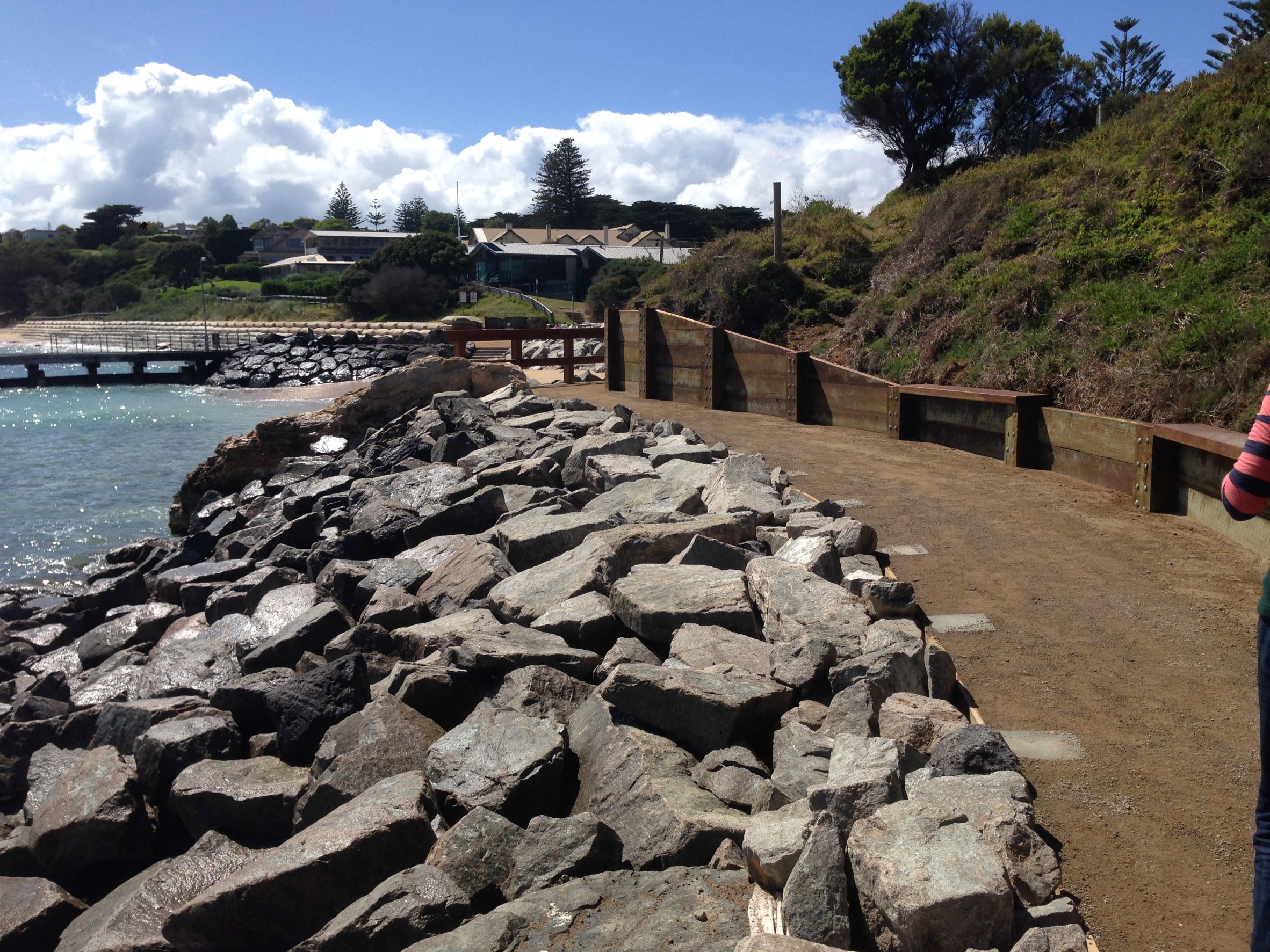
Image Source: Google
Rock revetments are an essential coastal defense structure that not only provides protection against erosion and storm surges but also enhances the aesthetic appeal of the shoreline. If you need more information about rock revetment design, you may check this website.
The design of rock revetments requires a delicate balance between functionality and beauty. A well-designed rock revetment can effectively dissipate wave energy, prevent scouring, and blend harmoniously with the natural surroundings.
1. Understanding Rock Revetments
Rock revetments, also known as riprap, are sloping structures made of durable, angular rocks that are placed along a shoreline to protect it from the erosive forces of waves and currents. These structures are designed to absorb and deflect the energy of incoming waves, reducing their impact on the shoreline behind the revetment.
Key Considerations:
- Wave energy dissipation
- Resistance to scouring
- Integration with the natural landscape
2. Balancing Functionality and Beauty
When designing a rock revetment, engineers and landscape architects must consider both the structural effectiveness and the visual impact of the structure. Balancing functionality and beauty involves careful planning, selection of materials, and integration of the revetment into the surrounding environment.
Factors to Consider:
- Material selection: Choosing durable rocks that are appropriate for the wave climate
- Placement: Ensuring proper slope and alignment for effective wave energy dissipation
- Vegetation: Incorporating native vegetation to soften the appearance of the revetment
- Aesthetics: Using color and texture variations in rock placement to create an appealing design
3. Designing for Longevity
A well-designed rock revetment should not only be functional and aesthetically pleasing but also durable and sustainable in the long term. Proper design considerations can help extend the lifespan of the revetment and minimize maintenance requirements.
Tips for Longevity:
- Proper foundation: Ensuring a stable base for the revetment to prevent settlement
- Toe protection: Adding a toe apron to prevent erosion at the base of the revetment
- Regular monitoring: Inspecting the revetment periodically for signs of damage or wear
- Maintenance plan: Developing a maintenance schedule for repairs and upkeep
4. Case Studies in Rock Revetment Design
Several examples around the world showcase the artistry and functionality of rock revetments in coastal protection. These case studies demonstrate the successful integration of rock revetments into the natural landscape while providing effective erosion control.
Notable Examples:
- Amager Beach Park, Denmark: A sculptural rock revetment that doubles as a recreational space
- Fort Myers Beach, Florida: A rock revetment with integrated plantings that enhance biodiversity
- Seven Sisters Country Park, England: A naturalistic revetment design that blends seamlessly with the cliffs
5. Collaborative Approach to Design
The art of rock revetment design often involves collaboration between engineers, landscape architects, and ecologists to create a successful and sustainable solution. By combining expertise from various disciplines, designers can achieve a balance between functionality and beauty in rock revetment projects.
Benefits of Collaboration:
- Integrated design solutions that consider both structural and ecological factors
- Innovative approaches to rock revetment design that prioritize sustainability
- Enhanced aesthetic appeal through creative partnerships between design professionals